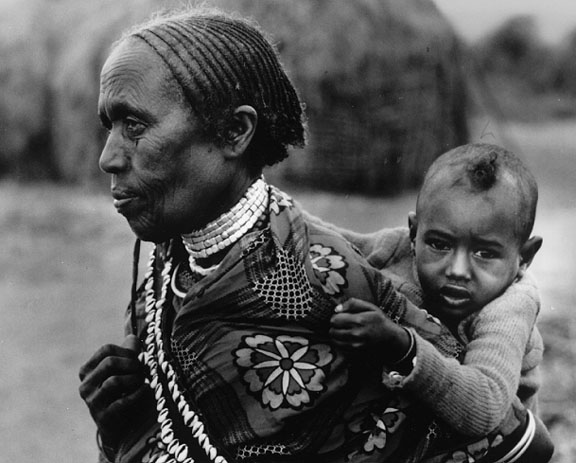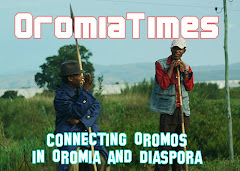A CASE FOR CARE A team of U.S. doctors and nurses discovers the unexpected on a mission to Ethiopia.
But not 8-year-old Zemen Toshome. For more than six years, Zemen has lived at Tikur Anbesa (Black Lion) Hospital in Addis Ababa. He goes outside only briefly on the hospital grounds. He can't shout because of his medical condition.
Zemen has laryngeal papillomatosis, a disease in which tumors grow inside the larynx, vocal cords, or respiratory tract. The disease occurs when the human papillomavirus (HPV) is transferred from a mother to her child at birth. The tumors can grow quickly and cause difficulty in breathing, which if not corrected can lead to death.
In the United States, treatment for Zemen might mean periodic visits to a hospital to have the tumors surgically removed. But Zemen doesn't live in the United States.
He, like other children with papillomatosis at Black Lion, underwent a tracheostomy. A small incision was made in his neck, and a little tube was inserted through the hole into his trachea, his windpipe. That's how Zemen breathes. That's how he stays alive.
But it's also why he lives at Black Lion. Were the child to leave the hospital for his home in the Gondar region, about 435 miles away, he would not make it back in time if a breathing emergency occurred.
Zemen's mother, Senait Hadgembus, 26, sleeps each night on a mat on the floor by his bed. So does a younger son with no medical condition. They share Zemen's hospital food. "It is a very difficult life, very difficult," said Senait.
Only a handful of "tracheostomy kids" are similarly imprisoned, sentenced to life inside Black Lion, perhaps until adolescence, when the tumors should go away. Some have no parents to stay with them.
Two-year-old Isac Tenodros has his father. Solomon Tenodros, 25, said his child had been in the hospital about a month. "I don't know how long Isac must stay here, but I will stay, too," he said. "The first concern is to save the life of my son. I am always here for Isac."
Those words are heartening to someone from the United States, where so many fathers in big cities similar to Addis Ababa are abandoning their children. There are many fathers, mothers, and other relatives at Black Lion taking care of family with AIDS, cancer, or other debilitating illnesses.
I met Solomon and Isac, Zemen and Senait, and other patients and parents at Black Lion while accompanying an American medical-missions team there a week ago. I learned a lot about Ethiopia, its people, and why U.S. health care, warts and all, provides a very good standard to emulate.
This mission was the first joint venture between the Philadelphia-area chapter of Healing the Children, a national group with a long history of medical missions to foreign countries, and Gemini Health Care Group, a new Alabama-based organization.
Gemini's founder and president is Ebba K. Ebba, a Jacksonville, Ala., pediatrician who left Ethiopia when he was 18. Other board members are also of Ethiopian heritage. Genesis' ultimate goal is to establish the first freestanding children's hospital in Addis Ababa.
"Out of Ethiopia's 85 million people, more than 40 percent are children under age 15. You can imagine the sheer magnitude of needs," Ebba said. "There are only 200 pediatricians in the whole country, and half of them aren't practicing."
Teaming up with Healing the Children helped Gemini raise its profile in Addis Ababa as it has pushed for its goal. Desi Ferrell, director of HTC's Philadelphia chapter, said it was the story of the tracheostomy kids that persuaded her to travel to Ethiopia. "I really wanted to make a difference for them," she said.
The earthquake in Haiti earlier this year sprouted new criticism that these types of medical missions are a mixed blessing - with foreign doctors and nurses parachuting in for a brief period, then going back home.
Carmela Green-Abate, Ethiopia coordinator for the U.S. President's Emergency Plan for AIDS Relief, told me the key is careful planning, making sure all your supplies and equipment arrive with you, and planning for follow-up care after you leave.
A slightly different perspective was taken by Glenn Isaacson, part of the Healing the Children team and director of pediatric otolaryngology at Temple University Hospital. He said patient care wasn't the only way to gauge success. "I think that the most satisfying but the least useful thing we do here is take care of patients," Isaacson said.
"The children are wonderful, the need is enormous, and as a physician, it is extremely satisfying to take care of them. But it's far more good for our [medical] residents and the Ethiopian residents to have the experience of providing good medical care, because the medical care here isn't good.
"It isn't good because the doctors doing it are too few and incompletely trained. It isn't good because they lack the resources to take good care of patients. They may have equipment, but much of it is broken."
Isaacson said it was clear that medicine had not been a top priority in Ethiopia, a country that puts only 1 percent of its meager gross national product into health care, compared with 14 percent for the United States.
"On the other hand, they're surrounded by Somalia, by Yemen, by Darfur [Sudan]; it's a country that has to spend a lot on defense and feels the need to maintain a fairly authoritarian government in order to fight its enemies," Isaacson said, "and such governments aren't as worried about a kid with hearing loss and a draining ear as we are."
Steve Serlin, a pediatric anesthesiologist at Children's Hospital in Phoenix, said it would have been nice if the nine-day medical mission could have lasted longer. "So much of our commitment is to teaching, and to really be effective in teaching, you need more continuity."
Michael Ritchey, chief of pediatric surgery at Phoenix Children's Hospital, said that what disturbed him most was the degree of severe pathology that goes untreated in Ethiopia. "There are so many patients and so few specialists, and these specialists have few resources, so they can't care for all of the patients they see."
The team was able to help the tracheostomy kids, but not so that they would be able to immediately leave the hospital. Healing the Children brought new equipment for Black Lion's staff to remove the children's life-threatening tumors, and the American agency plans to provide more equipment each year.
"These children are here because they live too far away, or their parents have finally abandoned them after years of living in the hospital," Isaacson said. "I'm hoping that the new generation of papillomatosis patients will be able to be treated and go home."
Zemen's mother said she had been told that her son may be able to leave Black Lion by the time he is 12. And Isaacson concurred. "Papillomatosis shows up in most children when they are a few years old, and it generally burns itself out or disappears on its own in preadolescence."
Healing the Children plans to return to Black Lion later this year. To help provide some continuity of care, Isaacson is working with the American Society of Pediatric Otolaryngology to have a volunteer physician at the hospital for one week each month.
I hope he is successful. I hope Zemen will be able to go home before he is 12 years old. I hope Isac will be able to leave Black Lion even sooner. Little boys should be outdoors playing, not stuck inside a place for the sick and dying.

















No comments:
Post a Comment